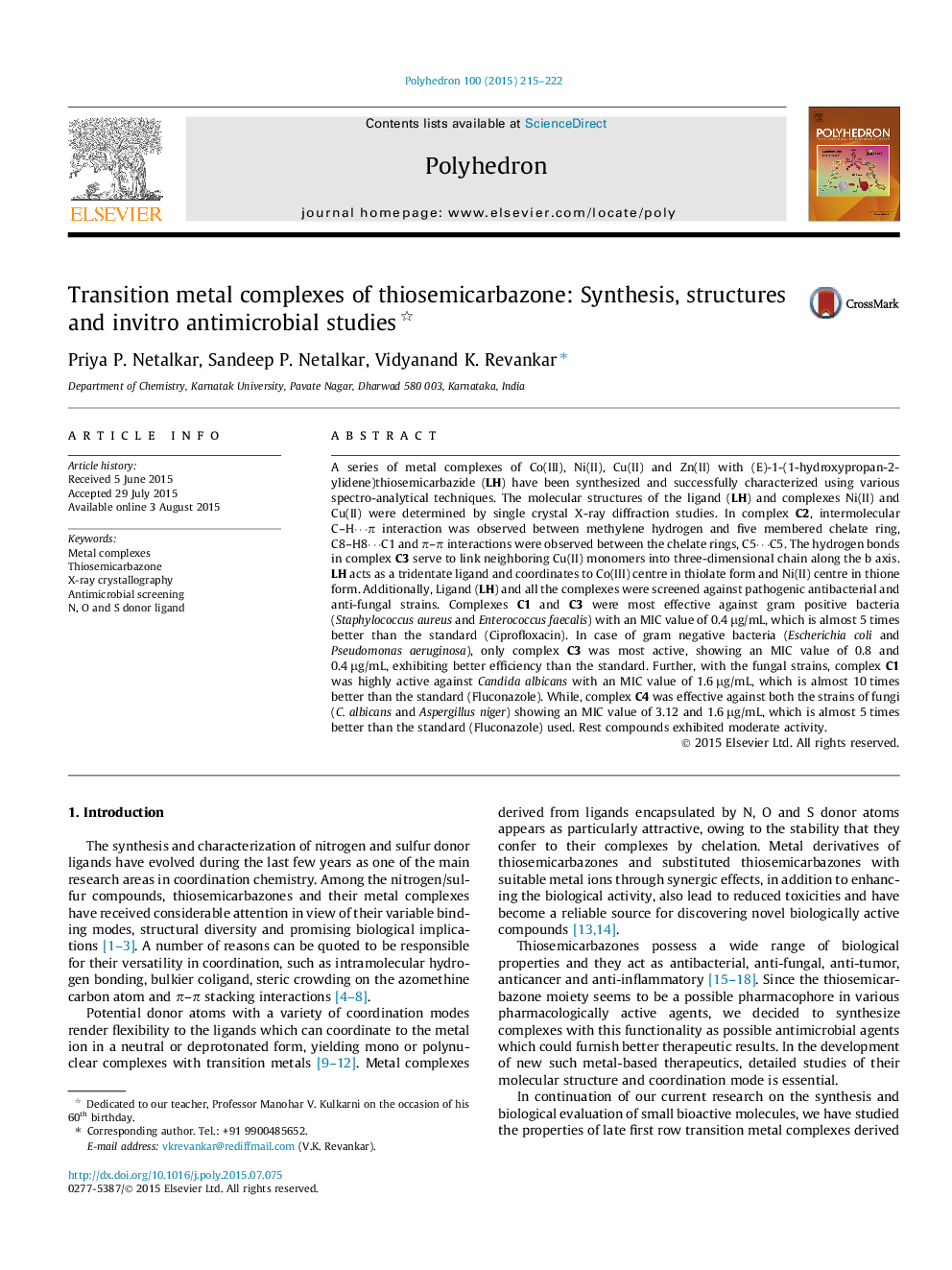| Article ID | Journal | Published Year | Pages | File Type |
|---|---|---|---|---|
| 1335935 | Polyhedron | 2015 | 8 Pages |
A series of metal complexes of Co(III), Ni(II), Cu(II) and Zn(II) with (E)-1-(1-hydroxypropan-2-ylidene)thiosemicarbazide (LH) have been synthesized and successfully characterized using various spectro-analytical techniques. The molecular structures of the ligand (LH) and complexes Ni(II) and Cu(II) were determined by single crystal X-ray diffraction studies. In complex C2, intermolecular C–H⋯π interaction was observed between methylene hydrogen and five membered chelate ring, C8–H8⋯C1 and π–π interactions were observed between the chelate rings, C5⋯C5. The hydrogen bonds in complex C3 serve to link neighboring Cu(II) monomers into three-dimensional chain along the b axis. LH acts as a tridentate ligand and coordinates to Co(III) centre in thiolate form and Ni(II) centre in thione form. Additionally, Ligand (LH) and all the complexes were screened against pathogenic antibacterial and anti-fungal strains. Complexes C1 and C3 were most effective against gram positive bacteria (Staphylococcus aureus and Enterococcus faecalis) with an MIC value of 0.4 μg/mL, which is almost 5 times better than the standard (Ciprofloxacin). In case of gram negative bacteria (Escherichia coli and Pseudomonas aeruginosa), only complex C3 was most active, showing an MIC value of 0.8 and 0.4 μg/mL, exhibiting better efficiency than the standard. Further, with the fungal strains, complex C1 was highly active against Candida albicans with an MIC value of 1.6 μg/mL, which is almost 10 times better than the standard (Fluconazole). While, complex C4 was effective against both the strains of fungi (C. albicans and Aspergillus niger) showing an MIC value of 3.12 and 1.6 μg/mL, which is almost 5 times better than the standard (Fluconazole) used. Rest compounds exhibited moderate activity.
Graphical abstractThe molecular structures of the ligand LH, C1 and C2 complexes have been determined by single crystal X-ray diffraction method. The hydrogen bonds in complex C3 serve to link neighboring Cu(II) monomers into three-dimensional chain. Ligand (LH) and all the complexes were screened against antibacterial and anti-fungal strains.Figure optionsDownload full-size imageDownload as PowerPoint slide
